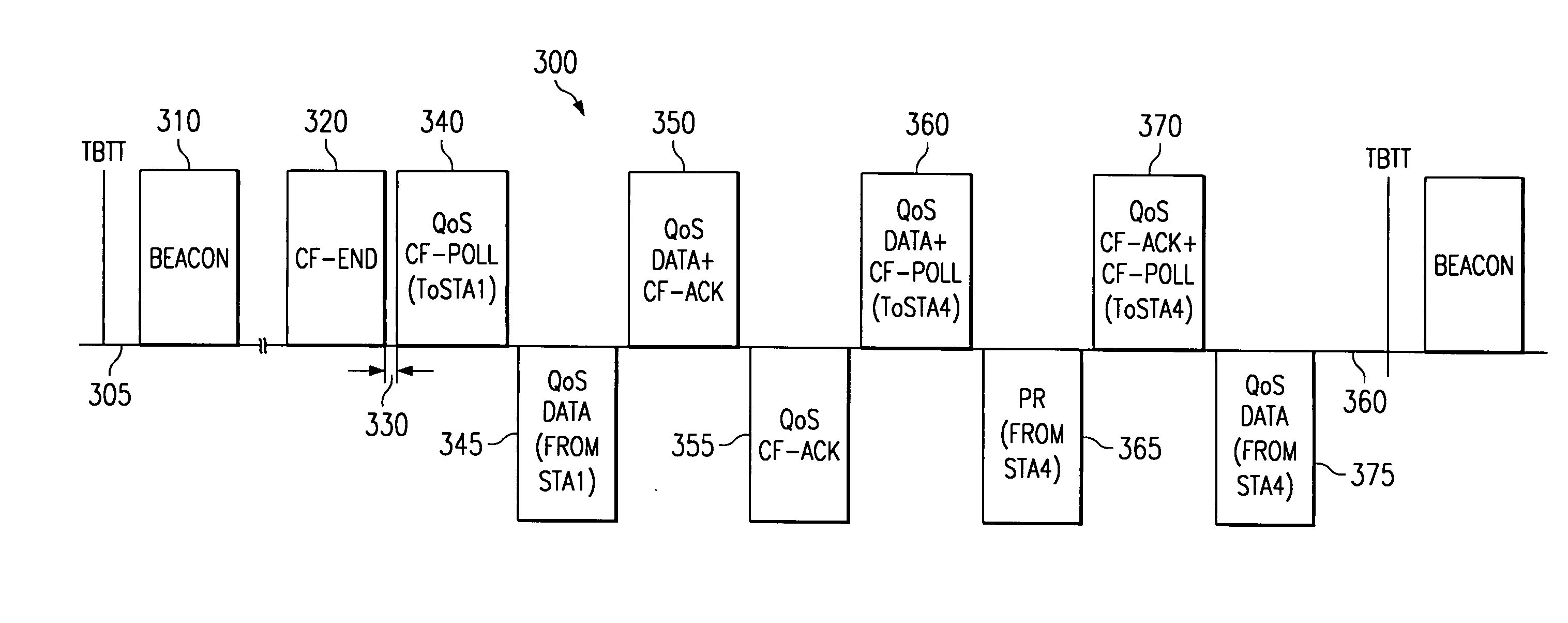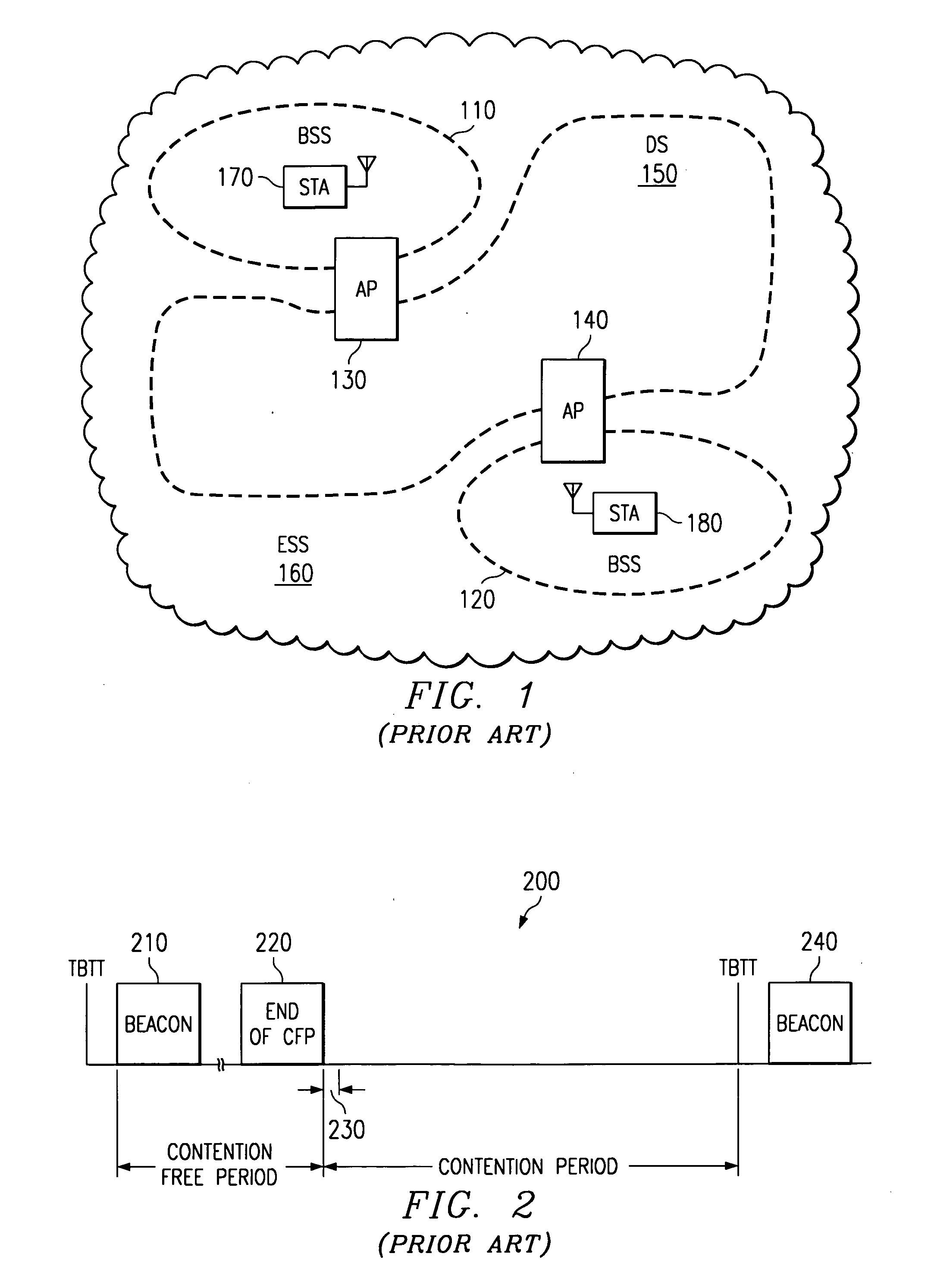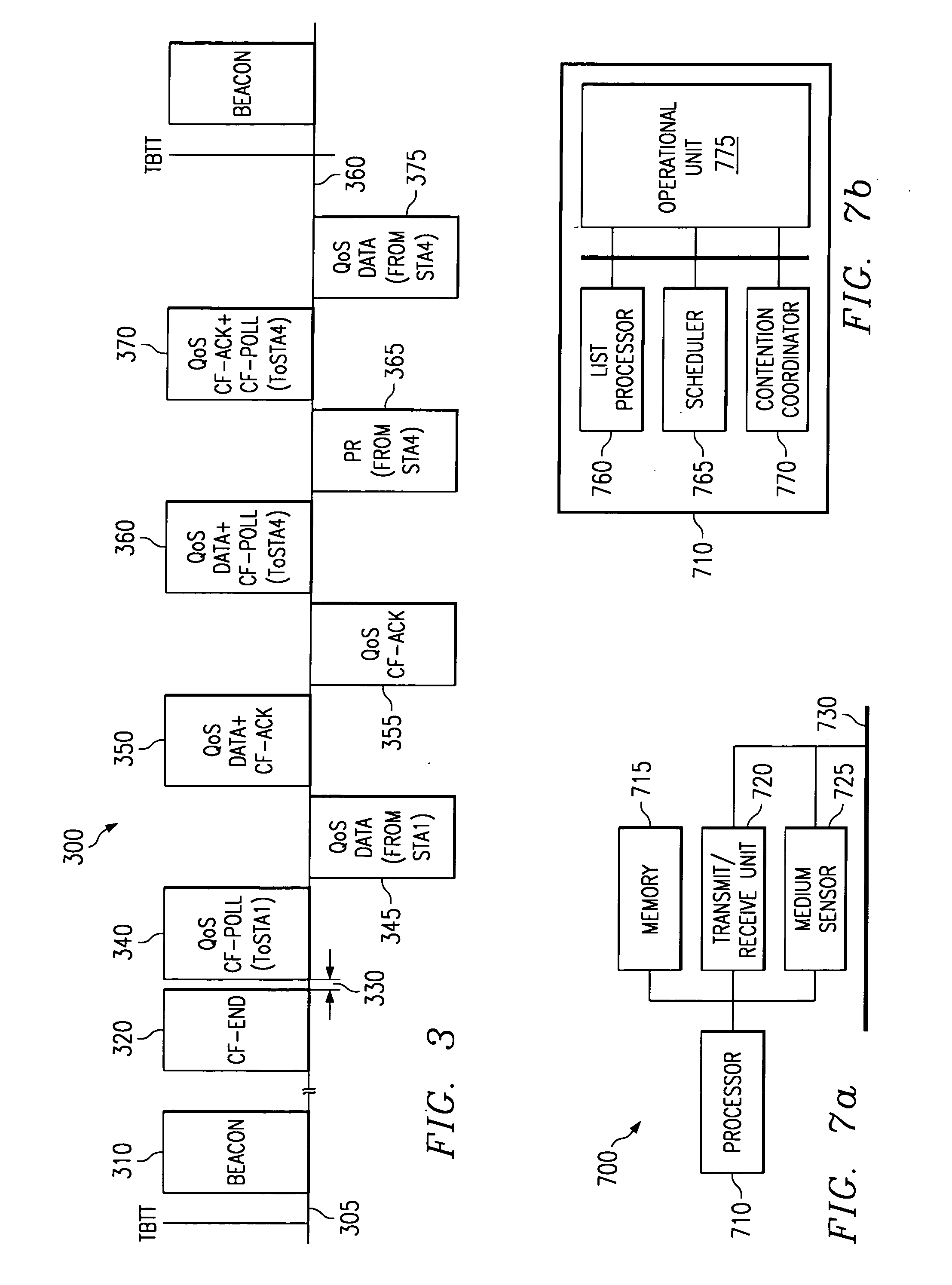Unified channel access for supporting quality of service (QoS) in a local area network
a local area network and unified channel technology, applied in the field of networks, can solve the problems of requiring significant time, mutual destruction of transmissions, and severely and rapidly degrading the performance of applications to a level that is unacceptable, and achieves the effect of reducing the amount of time and facilitating the use of available network bandwidth
- Summary
- Abstract
- Description
- Claims
- Application Information
AI Technical Summary
Benefits of technology
Problems solved by technology
Method used
Image
Examples
Embodiment Construction
[0026] The making and use of the various embodiments are discussed below in detail. However, it should be appreciated that the present invention provides many applicable inventive concepts which can be embodied in a wide variety of specific contexts. The specific embodiments discussed are merely illustrative of specific ways to make and use the invention, and do not limit the scope of the invention.
[0027] Sharing a communications medium is a necessity for a majority of the communications networks (networks) available today. Only in a small number of networks are there enough resources to permit dedicating communications media between pairs of users. For most purposes, dedicating a connection between pairs of users is an inefficient use of bandwidth resources. Sharing a communications medium between multiple users allow for more efficient use of the medium, because when one user may be idle, another user may have data to transmit. Sharing is also more cost efficient because a smalle...
PUM
 Login to View More
Login to View More Abstract
Description
Claims
Application Information
 Login to View More
Login to View More - R&D
- Intellectual Property
- Life Sciences
- Materials
- Tech Scout
- Unparalleled Data Quality
- Higher Quality Content
- 60% Fewer Hallucinations
Browse by: Latest US Patents, China's latest patents, Technical Efficacy Thesaurus, Application Domain, Technology Topic, Popular Technical Reports.
© 2025 PatSnap. All rights reserved.Legal|Privacy policy|Modern Slavery Act Transparency Statement|Sitemap|About US| Contact US: help@patsnap.com



